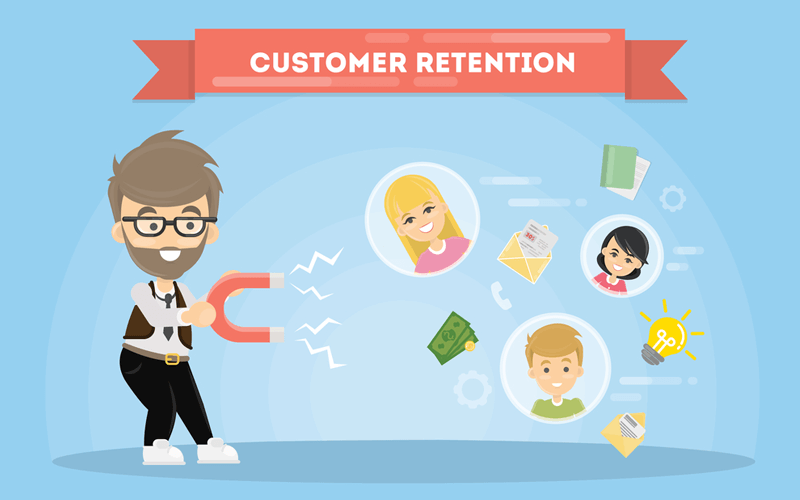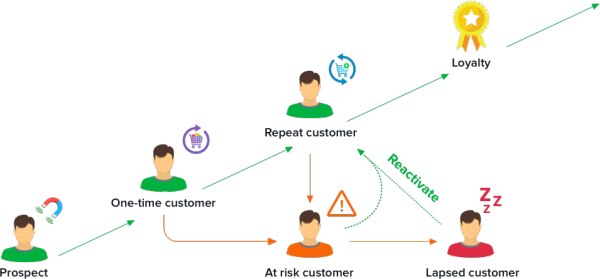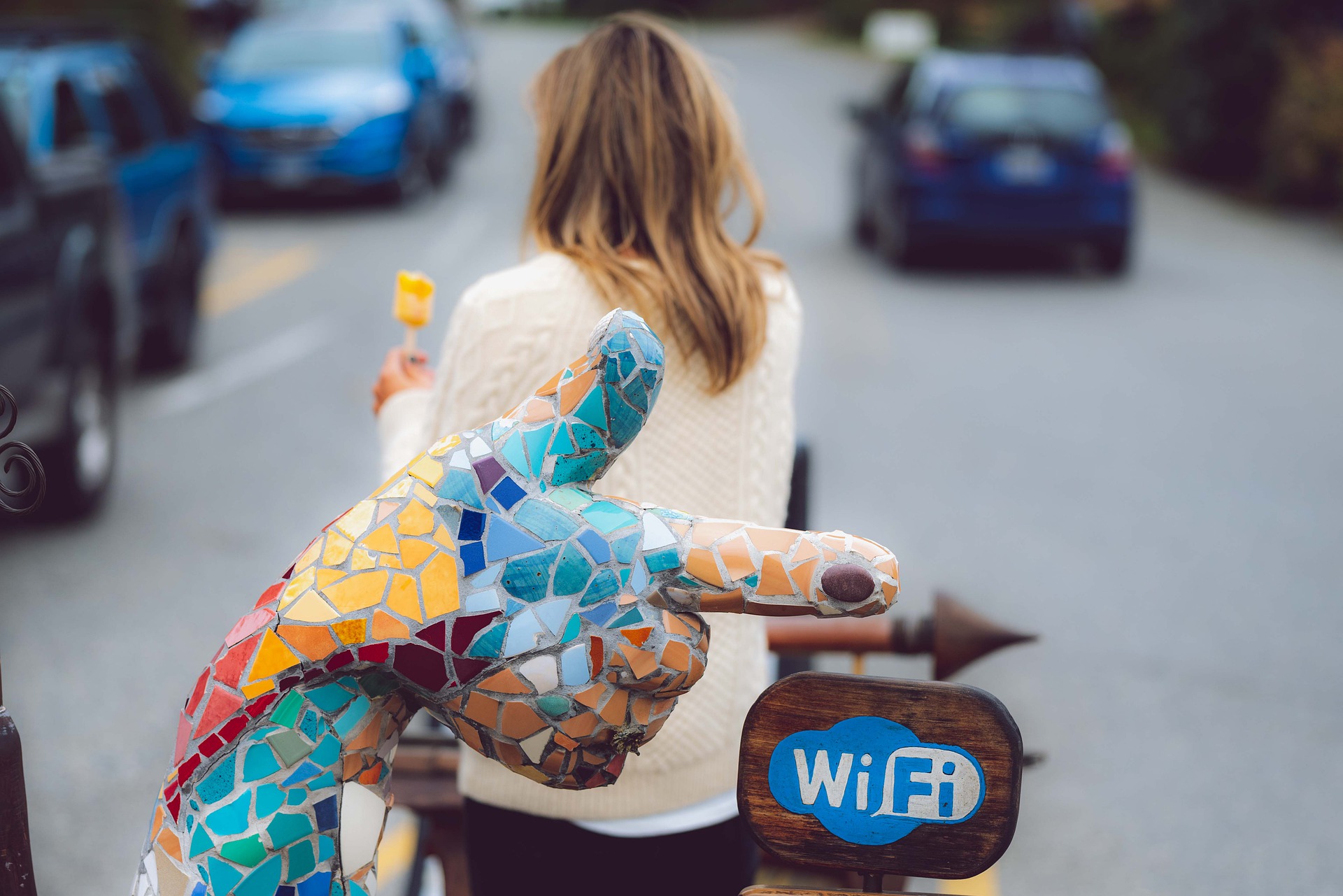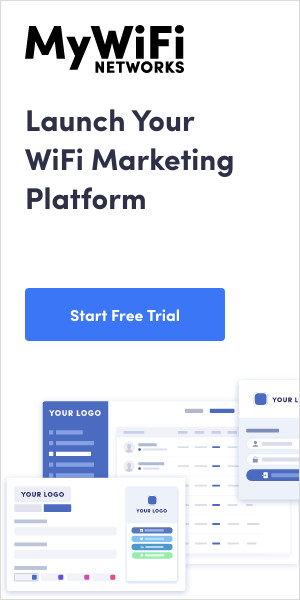When engaging with customers, there’s no one-size-fits-all option—the content and execution of your marketing outreach must change along with the customer’s perspective of the business.
For example, the messages that a marketer presents to new customers should be quite different from those sent to long-time customers. By determining the status of a customer’s relationship with the business before you begin marketing to them, you can optimize your campaigns. WiFi marketing not only helps you do that, but it also allows you to leverage insightful analytics and marketing stack integrations to automate the whole process.
This article will explain how you and your agency can use WiFi marketing to focus on specific phases of the customer relationship. We’ll go over five distinct customer groups, starting with prospects and ending with at-risk customers.
Automate Messages for Any Customer Relationship Scenario
Business owners can expect their relationship with customers to be dynamic, changing over time, and requiring a flexible marketing approach that can pivot to optimize outreach in every phase.
Building off the idea that marketers must be hyper-aware of their audience, it helps to view the phases of the customer relationship as linked to five customer types:
- Prospects—People in pre-customer status need to see specialized messages designed to attract interest and ultimately convert them into customers.
- First-time Customers—First-timers are in the honeymoon phase of their relationship with your client’s business. Woo them with special offers.
- Returning Customers—A second-time customer is a prime target for messages encouraging them to like and share on social media or join your client’s loyalty program.
- Loyal Customers—Customers appreciate regular discounts, exclusive offers, etc., plus, ongoing engagement can foster a sense of community among customers as well as between the business operators and the customers they serve.
- At-risk Customers—When a longtime customer stops visiting, there’s usually a way to win them back, but it takes careful outreach.
In this section, we’ll go over how you can use WiFi marketing to drive campaigns that will address the marketing goals corresponding to each of these customer types.

Prospect Outreach—The Timeless Allure of a Discount
Anonymous WiFi data, used in presence analytics, can help track in-store (or near-store) customer behavior even when the user has never logged on to your client’s WiFi network. Such raw visitation data can help identify broad trends in customer behavior; a close-up view of the data reveals individual, potential customers, i.e., receptive prospects.
When presence analytics tells you that people are hanging out in or near your client’s establishment without connecting to guest WiFi, you have an opportunity to figure out why they’re there and use that information to market to them.
Imagine a coffee shop owner whose WiFi analytics reveals a spike in foot traffic around 10:30 every Friday and Saturday night—immediately after the last show at the movie theater next door. That’s a “date night” crowd that can be attracted to the cafe. A savvy agency would suggest hanging a sign in the window with a message like “Present your movie stub for BOGO lattes!”
Insights about foot traffic patterns can lead to increased conversions. Be sure to use the presence analytics provided by your client’s WiFi network to examine the behavior of prospects so you can more easily turn them into customers.
Engage First Timers from Every Angle
When a customer first logs in to your client’s WiFi network, it’s time to use all available channels of communication to send precisely targeted messages, each synced with the customer’s actions.
This is it—the moment in the customer relationship when WiFi marketing lets you hit the Start button on automated customer engagement.
Data collected via a managed WiFi network, fed into your client’s marketing processes, can drive outreach that’s triggered by customer behavior in real-time. For example, messages can follow a customer step-by-step through their first experience with the business, like this:
- When they enter—Use the WiFi splash screen to display a welcome message and highlight your client’s loyalty program.
- While they’re on-site—The guest WiFi connection ensures immediate receipt of any message you send. Take advantage and use email or social media to explain the benefits of your client’s loyalty program, or simply send a text with a discount code for their next visit.
- Right after they leave—Offering a second-visit discount shortly after a customer’s first visit allows a business owner to say “thanks” and encourage repeat business at the same time.
- The next day—A short while after a customer’s visit, reach out to emphatically state how much their patronage was appreciated. Included with this second thank you should be a discount for their next visit.
WiFi marketing allows this phased outreach to happen in an automated way. A process that’s triggered by the customer’s first WiFi login kicks off delivery of carefully honed messages, each presented at the right time and on the right communications channel.

For Returning Customers, Capitalize on Early Enthusiasm
The next stage in the customer’s journey is as a returning customer—someone who’s been to your client’s establishment exactly once. The best approach to take with this segment of your client’s customer base is three-pronged:
- To encourage a second visit, create a sense of urgency. Employing an automatically sent email or SMS message, deliver a time-limited discount offer to first-time visitors only.
- Drive social engagement by capitalizing on early customer enthusiasm. You can encourage a return visit and get social media attention if you target new customers with a discount offer that’s only redeemable if they share or “Like” the business on social media.
- Highlight your client’s loyalty program. Using data collected via the guest WiFi network, you can target first-time visitors with an email message that lets them know that your client rewards active patronage.
Let’s look at a practical example. Your client, a restaurant owner, is seeking more repeat business. WiFi-collected customer data allows you to generate a list of “returning customers.” It’s an easy segment to define—people whose Number of Visits metric is 1.
By integrating this customer data with 3rd party CRM, email processing applications, and other marketing stack components, your agency automates the customer communication process for this campaign. The time saved in nuts-and-bolts campaign execution is used to craft perfect messages that hit each of the campaign goals outlined above.
With Loyal Customers, Stress that Membership Has Its Privileges
It’s important to reward customer loyalty regularly. Each time a loyal customer logs on and off the WiFi network, they should see welcome or thank you messages, always accompanied by a promotion or offer. They should also get an exclusive birthday offer every year.
Loyal customers are prime targets for all sorts of email outreach and social media engagement, but a top priority should be to increase membership in your client’s loyalty program.
If data from the WiFi network indicates that a customer consistently visits the establishment, there’s a good chance they’ve already been convinced to join the loyalty program. If that’s the case, be sure to stop asking, but if the customer hasn’t joined yet, keep up the pressure with personalized email messages that contain a compelling description of all the benefits the program offers.
Imagine a hotel owner who has asked you to help reduce customer churn. Your agency can split your attention between two concurrent campaigns: email messages targeted exclusively at active customers who have not joined the loyalty program, and social media outreach to maintain a constant level of awareness about the loyalty program among all customers and prospects.

Winning Back At-risk Customers—It’s Never too Late!
An at-risk customer is one who was visiting on a regular basis but has recently stopped. To lure them back, you need to create an email campaign, as that communication channel allows for a high level of personalization and provides room to express a heartfelt “please come back” message.
WiFi data collection and analytics can easily produce a list of at-risk customers to target. Crafting the right message takes creativity and a keen awareness of why the customer may have stopped coming. If there’s something to apologize for regarding the past operational difficulties, now is the time to do it. If a lackluster product offering has been greatly improved since the customer’s last visit, you must let them know that.
A gym owner is a good example of someone who can motivate a formerly loyal customer with the right message. The nature of the business calls upon owners to inspire and encourage gym patrons, including the ones who have stopped coming. The proprietor of a gym can win back absent customers by sending a targeted message, and like everything else in WiFi marketing, this can be automated. One filtered metric, a Last Visit date that’s three or more months in the past, for example, can be used to trigger an email campaign designed to bring old customers back into the fold.
Use WiFi Analytics to Measure Specific Campaigns
WiFi analytics make it easy to measure the effectiveness of all the types of campaigns discussed here.
You can identify a WiFi analytics metric that perfectly reflects any campaign goal, then simply show your client the difference between pre-campaign data and post-campaign data to prove that guest WiFi and your WiFi marketing strategies are responsible for the campaign’s success.
To impress a client who asked you to help increase repeat business, for example, a metric like Average Customer Repeat Rate is your best tool. Highlight positive campaign results; seeing a clear indicator of campaign performance can help your client decide to increase their engagement with your agency.
WiFi Marketing in Tune with the Customer’s Journey
To optimize customer engagement, your agency must track customer sentiment during their entire relationship with the client’s business. Their feelings may change over time and it’s crucial to reach out in ways that acknowledge the phase of the relationship they’re currently in.
We looked at five distinct customer groups, each requiring a different marketing approach. There’s a way to optimize communication during every stage of the customer’s journey, and WiFi marketing can be the engine behind campaigns that bring in prospects, delight regular customers, and lure back absent customers.


